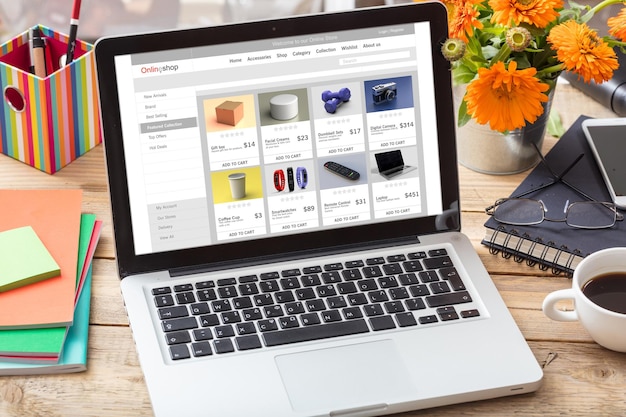Exploring the Essentials of Shopify Store Setup
Setting up a Shopify store is a gateway to the exciting world of ecommerce, where opportunities to expand and thrive abound.
Why is establishing a Shopify store so critical for entrepreneurs and businesses today?
It serves as a robust platform that simplifies the digital transformation of any business, facilitating the transition from brick-and-mortar to online sales.
With the ecommerce industry booming, getting your Shopify store setup right is more than just a technical step—it’s a strategic business move.
Getting Started: How to Start a Shopify Store
Embarking on your ecommerce journey begins with the crucial step of setting up your online store.
How to start a Shopify store?
It’s simple and straightforward, yet it requires careful planning and execution.
Think of it as setting the foundation of a building; the stronger your foundation, the sturdier and more resilient your online business will be.
This initial phase includes choosing a catchy and relevant store name, securing a domain that aligns with your brand, and setting clear, attainable goals for what you want to achieve.
Shopify Quick Start Guide
Once you’ve decided to launch your online store, a Shopify quick start guide can be incredibly helpful.
This guide typically covers the basics—from signing up for an account to selecting a plan that suits your business size and scope.
Remember, each decision you make, from the site design to the products you offer, should reflect your brand and appeal to your target audience.
Setting up Shopify payments is another fundamental step, ensuring that your customers have a smooth and secure checkout experience.
Choosing a Shopify Theme
An integral part of the Shopify store setup is choosing a Shopify theme.
Your chosen theme determines the look and feel of your store, impacting how customers interact with your site.
Opt for a theme that not only resonates with your brand but is also functional and user-friendly.
Does it load fast? Is it easy to navigate? These are critical questions to ask when selecting your theme.
Shopify Launch Checklist
Before going live, referring to a Shopify launch checklist can save you from future headaches.
This checklist should include testing your website’s functionality across different devices and browsers, setting up your store’s analytics to track performance, and ensuring all your products are correctly categorized and described.
How to add products to Shopify?
Each product should have high-quality images, detailed descriptions, and relevant tags to help customers find them easily.
How to Add Products to Shopify
Adding products is perhaps the most exciting part of the Shopify store setup.
This is where you start populating your store with items you want to sell.
It involves more than just uploading photos and descriptions; it requires optimizing product pages for SEO, setting up categories that make navigation easy, and perhaps integrating with inventory management systems to keep track of stock levels.
Setting Up Shopify Payments
To handle transactions smoothly, setting up Shopify payments is essential.
It supports multiple payment methods, providing flexibility and convenience for your customers.
Ensure that your payment gateway is properly configured to accept all major credit cards, PayPal, and any other payment methods your target market prefers.
Shopify Store Setup: The Path to Launch
With all the technical details handled—from theme selection and product addition to setting up Shopify payments—you’re almost ready to launch.
However, don’t rush this final phase.
Review every detail meticulously.
Is your website’s user experience intuitive? Are all links and buttons functioning properly? A final sweep through your Shopify launch checklist can ensure that you address any last-minute issues before your store goes live.
Setting up a Shopify store is not just about launching an online shop; it’s about creating a seamless, enjoyable shopping experience that resonates with customers and brings them back.
By meticulously planning each step, from the initial setup to the final launch, you position your business for success in the competitive digital marketplace.



